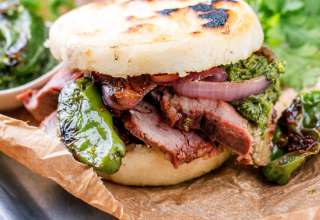We all like a pint or two of craft beer at the end of a long day or to end the week, but if someone asked how they’re made would you be able to answer? Here’s our guide to the more unusual, but now widely available, craft beer styles in pubs and bars.
Buying a pint of beer in your local pub used to be relatively straightforward. Now there’s a lot to consider before ordering from the bartender. First of all are you a bitter or lager drinker? If you prefer bitters do you want an ale or do you want to be adventurous and go for a stout? As for lager, well, let’s just go for Pilsner as 90% of them are made that way anyway.
But now, with the craft beer craze in full swing, deciding what beer to buy can be more like a test in geography, chemistry and brewing. So to help, here’s a few tips on some of the more unusual styles of beer you might see flagged up. Good luck!
Saison
Once niche, saisons beers are becoming the mainstay of the craft beer movement. Saisons, like so many beers, are originally from Belgium, but have become very popular in the US where brewers are using an increasingly diverse range of herbs and spices, as well as the traditional hops, malt and water, to stand out. This style of beer features part of the maturation process occurring in the bottle, which yields a stronger yeast flavour. A typical saison should have a light golden colour unless brewed with a darker malt which yields a more reddish-amber batch. The flavour should be spicy and fruity on the palate, and can be pretty strong (with an average of 7% ABV).
Rye
Rye beers are also becoming increasingly popular in the craft beer scene and are considered a speciality beer. They contain both barley and rye can be brewed with unusual accompaniments like rice or corn. In the US, this style has branched off to include an IPA (Indian pale ale) variety that is much hoppier than a standard rye beer. The German invention tends to be a bit spicier and sweeter than other styles, and less bitter than a classic beer. The differences in style are based on the ratios of rye and barley used. If the rye is around 20% they have spicy notes that even taste a little bread-like (think pumpernickel). ABV on rye brews ranges from 4% to 7% and the colour is a deeper red as a result of adding rye.
Wild ales
Wild ales are an American style that relies on wild yeast for fermentation. They are often expensive as they take a long time to produce. But you can expect a tart, sour flavour with mild fruity undertones to balance the acidic qualities. This brew style is the perfect cross-section for beer fans and wine lovers as it has the best qualities of both. The difficulty in making wild ales is said to have influenced many craft brewers in developing more mainstream styles. So if you see a wild ale it is well worth seeing what the fuss is about as there are many to choose from be they sweet, sour, smoked or spiced, warm or cold.
Smoked beers or Grodziskie/Gratzer
A summer BBQ isn’t the only time smoky flavour is in high demand. A smoky quality or flavour is becoming increasingly popular among beer brewers, particularly utilizing this Polish-origin brew. Grodziskie (or Gratzer depending on who you ask) comes from oak-smoked wheat malt to provide it’s distinctive toasty flavour and smoky aroma. But they also produce light, fresh, hoppy, foaming beers, which have low alcohol content (about 3% ABV). The amount of carbonation has even earned it the nickname “Polish Champagne.” It is a style also popular in Germany, having been the beer distributed to German soldiers during World War II. Not surprisingly the brew style is also popular in the US given its love for all things BBQ.
Gruit
If you’re looking for a new brew to try this winter considering giving a gruit beer a try on February 1st which is International Gruit Day. This goes back to the medieval days of brewing when it was botanicals and combinations of herbs and spices controlled the beer flavouring and bittering process. The mixture of weird and wonderful spices, including the likes of mugwort, ground ivy and horehound, might also include twigs and berries and all came together to create the “gruit” which was then used in the brewing process. The term gruit refers to the native region of the beer, an area covering modern-day Belgium, westernmost parts of Germany, and the Netherlands. Modern style gruits have an “anything goes” attitude including local spices and ferns being used to create arguably the most distinctive craft beers on the market. With over 30 varieties to choose from, it’s easy to find something to suit your palette.
Sahti
This Finnish brew, often referred to as “ancient beer”by Finns due to the various styles, is not for the faint of heart or taste buds. The combination of barley, wheat and rye and oats coupled with juniper in addition to (or in lieu of) hops gives sahti it’s colour and distinctive taste that often hints at a banana or citrus flavour. Sahtis come unfiltered, making it cloudy and are quite flat, which can puzzle drinkers upon their first taste of the 8% ABV Finnish classic.
Purl
Again you are unlikely to find this down the local Dog & Duck, but it is a good style to know about if you are hanging out with real beer lovers. This is a style that dates back to 19th century England when English labourers would lap this herbal-based beer up after a long shift, no matter the time of day. It was originally flavoured with wormwood, the same bitter plant used in producing absinthe that was thought to be hallucinogenic. Modern purls are infused with gin, ginger, and spices; still a pretty heady combination.
Oyster Stout
Oyster stout was the product of a decline in oyster beds and the beer of choice shifting from stout to pale ale. This fishy brew has its roots in New Zealand before it made its way over the London in 1939 via Hammerton Brewery. Modern day oyster stouts are made by throwing a few fresh oysters, shells and all into the brewing barrel. As well as the distinctive and sweet flavour it is said to add minerality and extra body to the beer.
Braggot
This is a combination of the processes used to make both traditional meads and beers. Which means combining honey (from the mead) and grains (from the beer) into one big brewing pot to create a braggot. The result is a unique mixture of sweetness and maltiness mostly available in the US. Back in the Dark Ages in Britain publicans would blend the two together on the bar, throwing in for good measure any herbs, spices, flowers, and fruits they had to hand. It’s even noted in the 852 Anglo-Saxon Chronicle as a Welsh ale. Careful, though, as most braggarts are in the 8 to 10% ABV region.
Black IPAs
Black IPAs are also known as American black ales and are essentially a twist on the classic Indian Pale Ale, but are more for a stout lover with their malty taste that can leave a toffee or caramel undertone on your tongue. They are made by combining both malts and hops in the brewing process to create what can be extremely hoppy, strong (5.5-9% ABV), and dark beers, hence the name.






